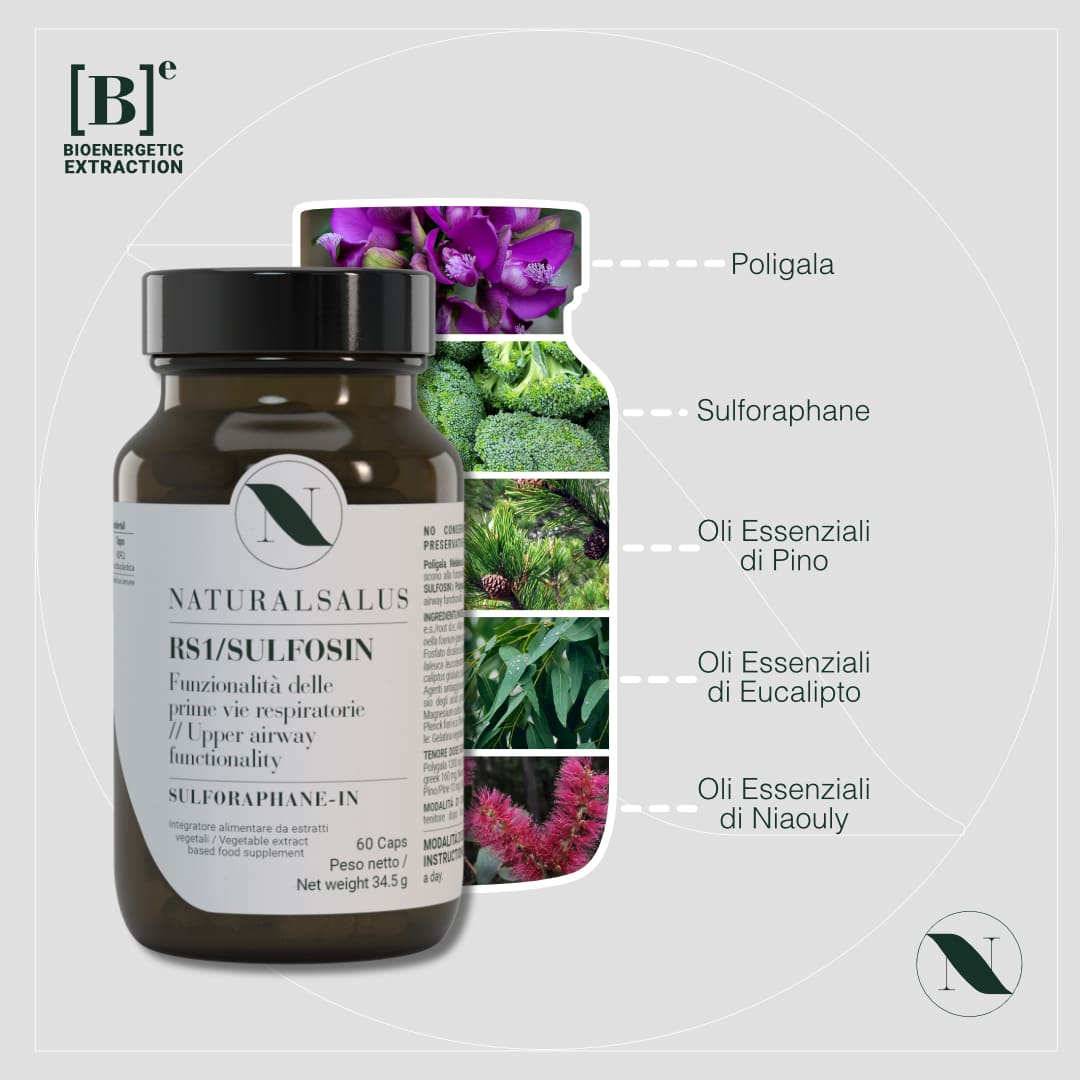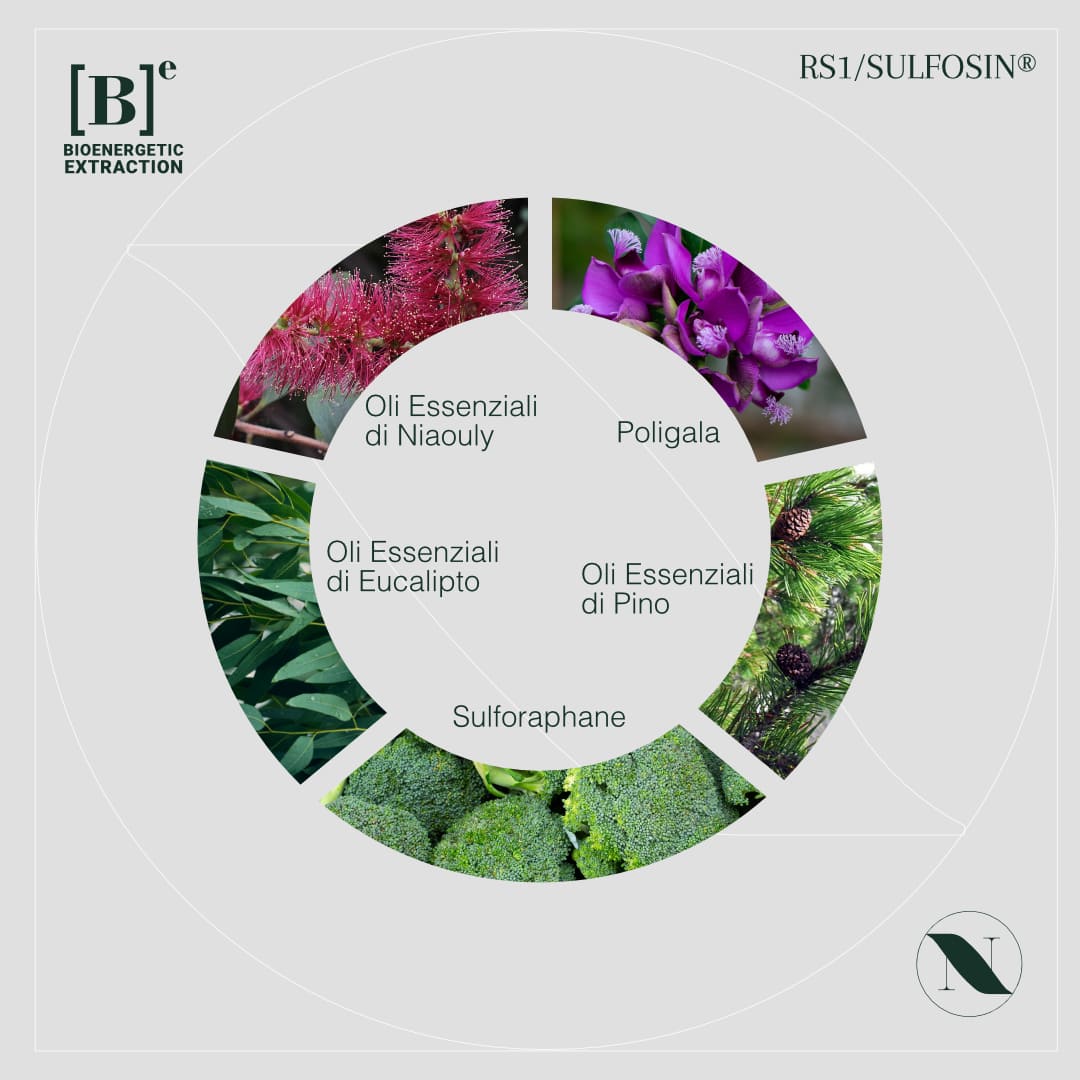

RS1/SULFOSIN® - Natural sinusitis and upper respiratory tract food supplement
Targeted action on sinusitis and congestion – Unblocks nose, throat and ears
Colds, congestion or sinusitis make breathing difficult, thus making even the simplest daily activities tiring. RS1/SULFOSIN® by NATURALSALUS is designed precisely to help the body clear the upper respiratory tract, decongest the paranasal sinuses and promote mucus thinning even nose and ears mucus.
A synergy of Sulforaphane and plant extracts such as Milkwort, Garlic, Fenugreek plus a blend of balsamic essential oils like Niaouly, Eucalyptus and Pine. RS1/SULFOSIN® is an advanced phytotherapeutic formula designed to ward off recurring sinusitis, stubborn colds and difficult to loosen phlegmy congestion, even from the ears and frontal sinuses.



Explore other areas of wellbeing
Discover all our other products, organised by condition, benefit, stage of life or lifestyle, and find the natural supplements that best suit your needs.



